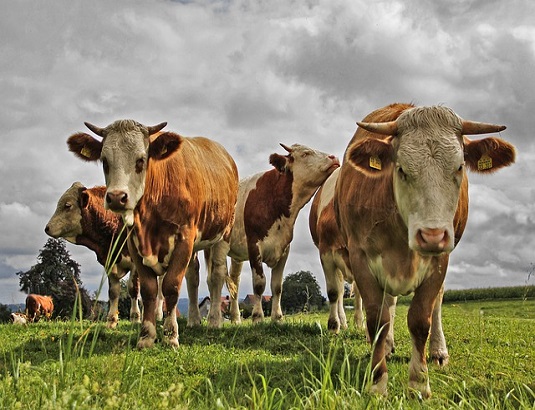The mammary glands of mammals secrete milk or raw milk for being consumed by their off-springs and also derived from them for human consumption. It is primarily 87.3 per cent water, 3.9 per cent fat and 8.8 per cent nonfat milk solids (protein, milk sugar, minerals, etc.).
The farm-fresh milk can be purchased, among others, as full-fat (whole or 3.25 per cent fat), 2 per cent fat, 1 per cent fat and nonfat (skimmed).
There are different varieties of milk products available for online milk delivery in Delhi, such as:
Pasteurized: Pasteurized is heated at 161 F (71.7 C) for at least 15 seconds and then rapidly cooled. This process kills any harmful bacteria. Some beneficial nutrients are also removed during the process, and vitamins A and D are typically added.
Raw Milk: This type of milk is not pasteurized and therefore has the nutrients of all milk products.
Dry or Powdered Milk: This milk is obtained by the process of dehydrating the pasteurized milk, sold in the form of powder. It can be added to other milk products for texture enhancement, such as creaminess. It is available in nonfat and full-fat types.
Powdered Milk
Online milk delivery in Delhi is obtained by evaporating the raw milk, and the resultant residue is left behind in the form of solids which lacks the moisture content. It is evaporated milk that is condensed and processed further. The fluid is pasteurized during the process of evaporation, under controlled temperatures.
Though the milk delivery in Dwarka is considered similar in health benefits in comparison with fresh milk, care must be taken to note the sugar content in the powdered milk containers. It must be ensured that the vessels do not show ‘added sugar’ in captions in fresh farm milk.
Secondly, the composition mentioned in the containers must be followed as to ensure that the stipulated quantity of distilled water and milk delivery in Dwarka are added as directed.
Also, the manufacturer of the powdered product must be ensured to be reputed one, especially while feeding the children on powdered milk products.
Difference
Cow’s fresh milk or farm fresh milk is a different product as compared to powdered milk. Once the properties of the milk are transformed, the solid from liquid form changes flavour as compared to cow’s milk beverages. Some of the nutritional differences are cited below:
Milk Nutrition Facts
It can be noted that the majority of differences in cow’s milk products are macronutrients based and not based on vitamins and minerals. For example, 244 grams of online milk delivery in Delhi, contains:
- 149 calories
- 7.9 grams of fat (4.6 grams saturated fat)
- healthy fats, like omega fatty acids
- 7.7 grams of protein
- 11.7 grams of carbohydrates
Apart from the above, the online milk delivery in Delhi contains vital minerals and vitamins, such as Calcium, Potassium, Magnesium, Phosphorus, Zinc, Copper, Selenium, Vitamins A, B1 (thiamin), B2, B5, B6, B12 and D.
Whereas the farm-fresh milk contains similar vitamins and minerals as compared to full-fat dairy, but it contains slightly more nutrients and somewhat less of others but contains different macronutrients. Each cup contains:
- 83 calories
- 0.2 gram of fat (0.1 gm is saturated fat, no omega fatty acids)
- 17 per cent protein
- 4 per cent carbohydrates
Powdered Milk Nutrition Facts
One ounce (28 grams) of the dried whole milk contains:
- 139 calories
- 7.5 gms fat (4.7 gm saturated fat) with Omega-3 and omega-6 fatty acids
- 7.4 gms of protein
- 10.8 gms of carbohydrates
Cow’s Milk vs Powdered Milk
Though most of the nutrients present in milk delivery in Dwarka (fresh) and powdered milk are similar, their composition may vary. If whole and nonfat milk are compared, the variations are minimal, but notable various are seen between whole and nonfat dried cow’s milk.
As a comparison, dried milk products have more minerals and lesser vitamins than fresh milk.
Experts also recommend that with a view to lower the intake of saturated fat, nonfat milk products should be preferred. As an alternative to avoid saturated fats, the powdered nonfat milk can be used in the preparation of beverages, desserts and yoghurt.






